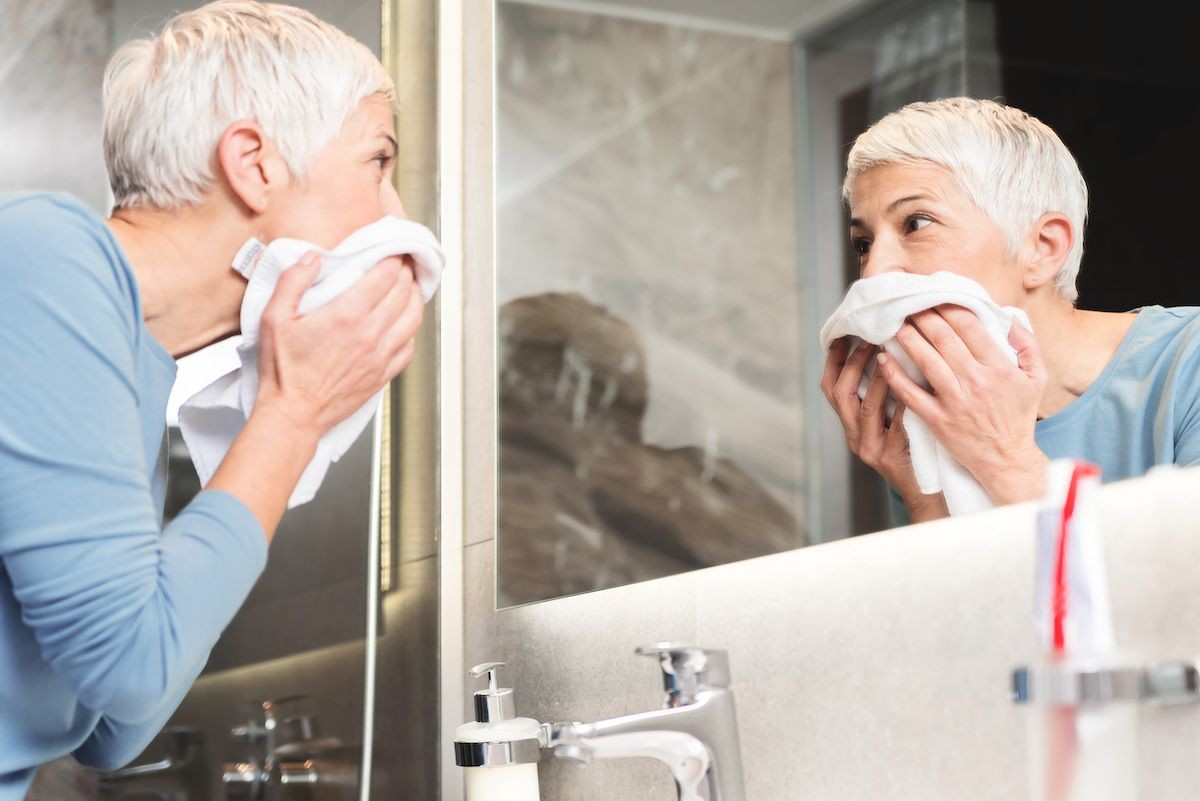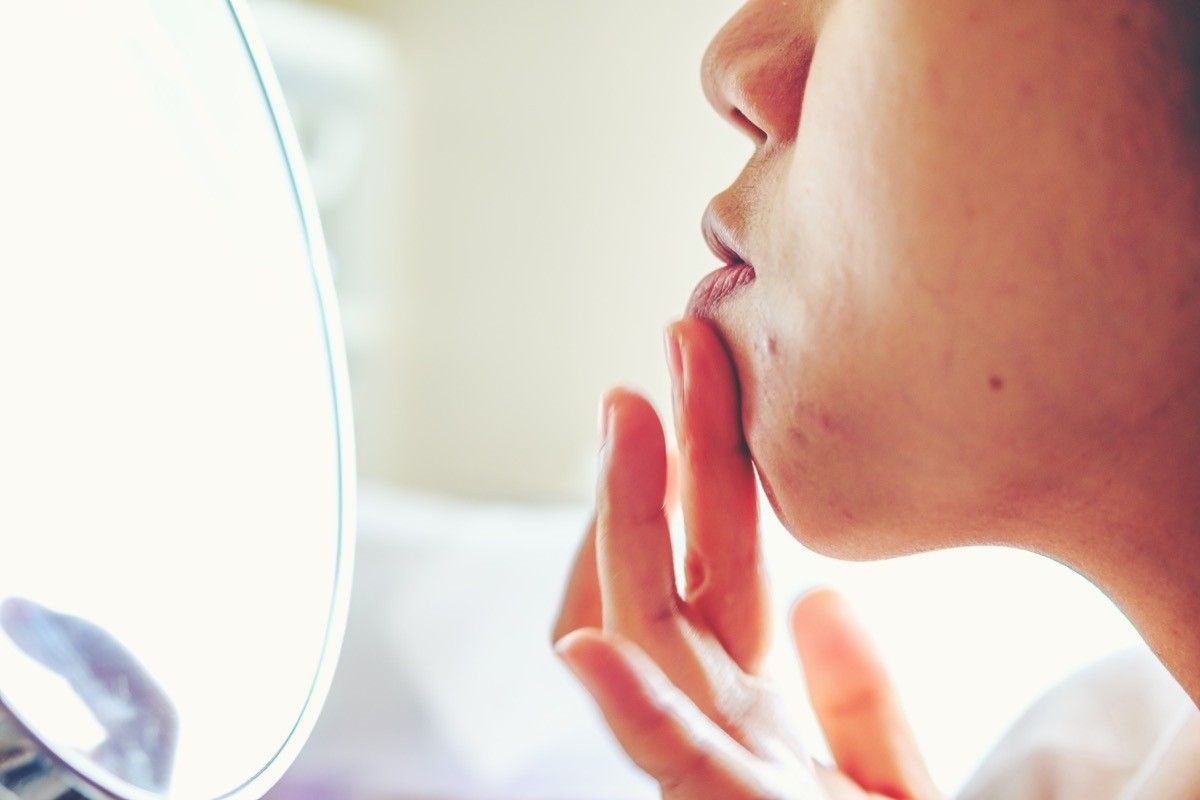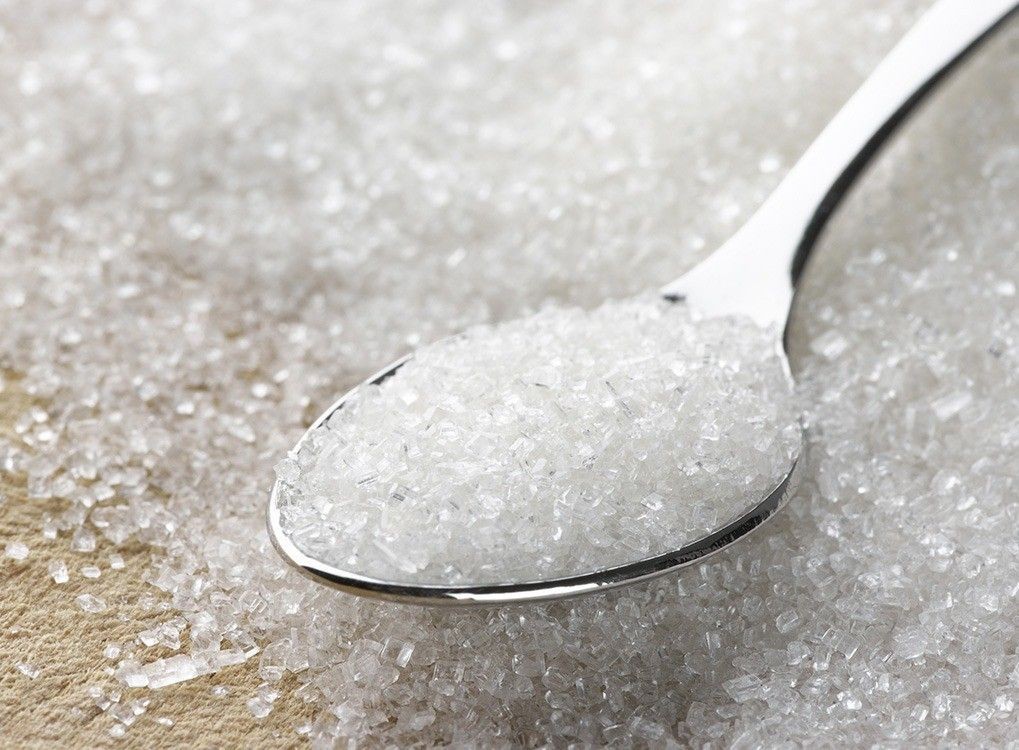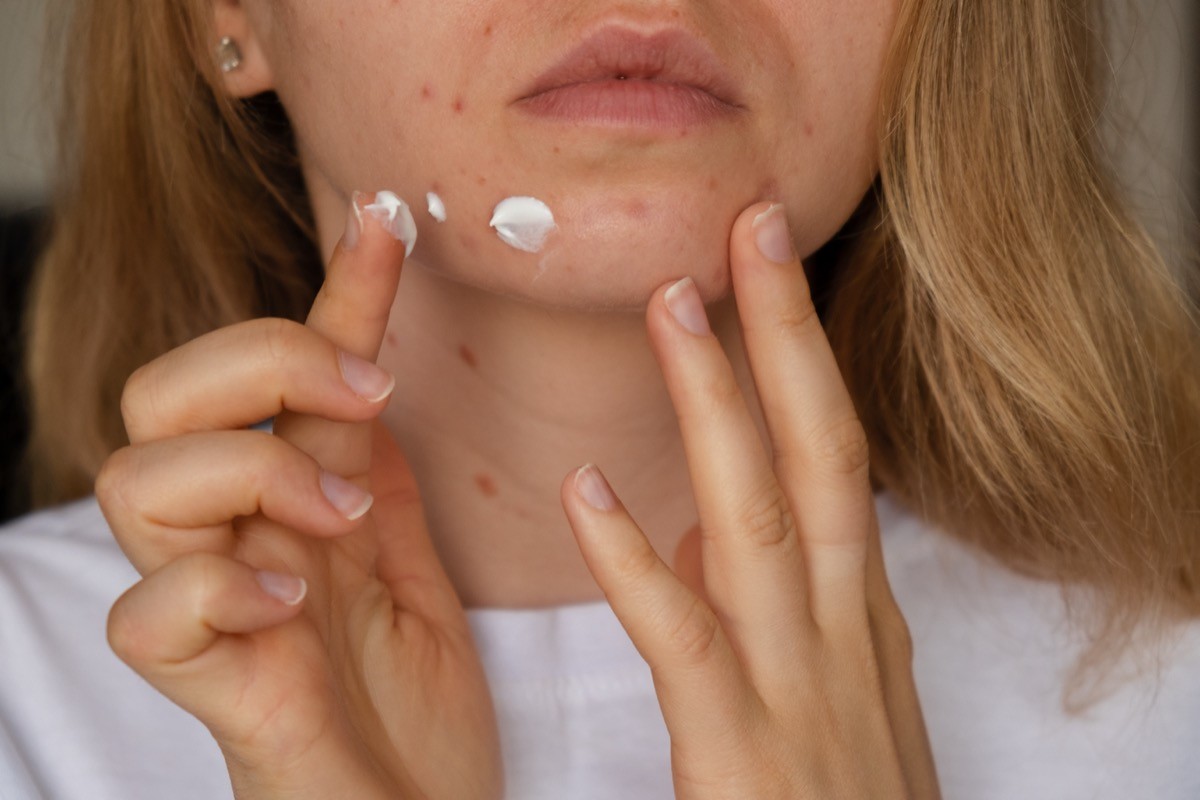Dermatologists Warn About the No. 1 Cause of Adult Acne

Acne is supposed to only happen in your teens, right? Unfortunately, acne can happen at any age. “The truth is, it is quite common to see acne persist into adulthood,” say Kristina Liu, MD, MHS, and Janelle Nassim, MD, via Harvard Health. “Although acne is commonly thought of as a problem of adolescence, it can occur in people of all ages. Adult acne has many similarities to adolescent acne with regard to both causes and treatments. But there are some unique qualities to adult acne as well.” So what causes adult acne? Here’s what dermatologists have to say.
RELATED: Dr. Pimple Popper’s Top Tips for Clear Skin at Any Age.
Hormonal Issues

Acne can be triggered by hormonal changes, especially for women. “As we get older, our estrogen levels often decline,” dermatologist Mary Sheu, MD, tells Johns Hopkins Health. At the same time, male hormones, like testosterone and dihydrotestosterone, which we all have, increase. Because our bodies have fewer female hormones to suppress the effects of the male hormones, the effects of those hormones become more evident. You may see an increase in oil production, and the oil produced by your face may be thicker. Your pores may look larger. This can lead to clogged pores and more acne.
Stress and Adult Acne

Stress is also a major cause of adult acne flare ups. “In addition to all the other issues it can cause, stress can aggravate any skin condition,” dermatology specialist Lauren Zamborsky, CNP tells the Cleveland Clinic. “Adopting healthy stress management habits can help your skin.”
Low-Glycemic Diet

Following a low-glycemic diet can help prevent acne. “Findings from small studies suggest that following a low-glycemic diet may reduce the amount of acne you have,” according to the AAD. “Low-glycemic foods include most fresh vegetables, some fresh fruits, beans, and steel-cut oats. Scientists believe that following a low-glycemic diet may reduce acne because this diet eliminates spikes in your blood sugar. When your blood sugar spikes, it causes inflammation throughout your body. These spikes also cause your body to make more sebum, an oily substance in your skin. Both inflammation and excess sebum can lead to acne.”
RELATED: Dermatologists Are Warning About This Skincare Mistake.
Carbs, Sugar, and Milk

Studies show certain foods are more likely to trigger acne. “Foods rich in refined carbohydrates (think breads/pastas containing white flour, rice cakes, most crackers, chips/fries, sugary drinks and sodas) have been shown to increase acne in some individuals,” says Lindsey Hunter-Ellul, MD. “Whether skim, low-fat or regular, there is some evidence that individuals consuming more milk tended to have more frequent breakouts. Studies have not shown this connection with yogurt or cheese.”
How To Treat Adult Acne

Cleanse your face twice a day with a gentle product. “I often recommend a topical retinoid cream to unclog pores and exfoliate the skin,” Dr. Sheu says. “Retinoids also have some anti-inflammatory effects, and they increase the rate at which our skin cells divide. This helps to heal the skin faster. Many over-the-counter treatments contain retinoids. Topical anti-inflammatories, like dapsone gel, can also reduce acne. An oral prescription medication called spironolactone can reduce the effects of male hormones. Chemical peels and blue light therapies also help if you want to clear up acne more quickly.”
You’re Not Alone

Adult acne is more common than you might think. “It’s a common misconception to think of acne as a teenage disease,” says Yale Medicine dermatologist Christopher Bunick, MD, PhD. “One of the most common reasons adult women between the ages 20 of 40, for example, come to the dermatology clinic is for acne. Clinical trial data revealed that approximately 50% of women in their 20s, 33% of women in their 30s, and 25% of women in their 40s suffer from acne. The good news is there are many treatment options available to help.”